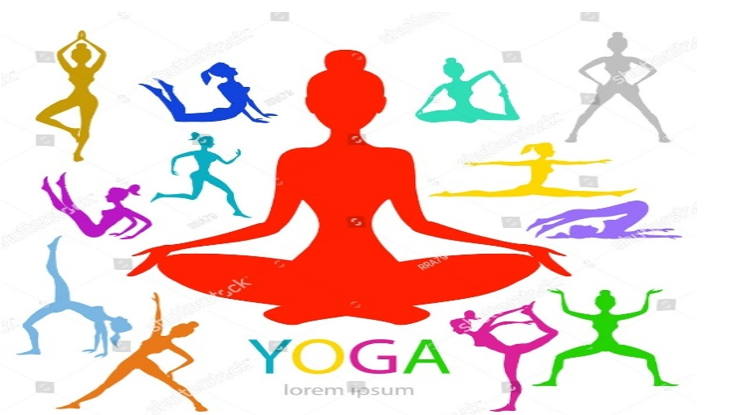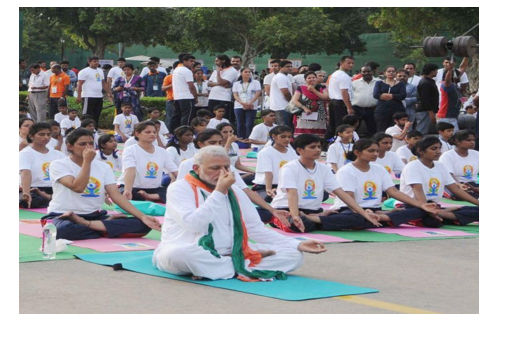https://meditropics.com/?page_id=863&preview=true
*Sumit Pachori
*Senior Resident, Department of Medicine, LHMC, New Delhi
Yoga is a Sanskrit word which means union of body, breath, and mind. Yoga has 3 main pillars i.e., Asans (body position), pranayama (controlled breathing exercise), meditation/dhyana +/- mantras.

Covid-19 has been a huge pandemic, and no one in the world remained untouched by it. Covid survivors show a prolonged impact like respiratory problem, body ache & joint pain, fatigue syndrome, headache and various psychiatric illnesses. Seeing all these, there is a strong need of rehabilitation after discharging these patients, and yoga is a very effective remedy to recover from all these illnesses. Several randomized controlled trials have shown efficacy of yoga practices in various disease like HTN, COPD, Asthma, Diabetes, sleep disorder, obesity, depression, covid 19 etc. [1,2,3,4,5,6]
Yoga ‘asanas’ and breathing techniques or exercise (‘pranayam’) increase lung airflow capacity and stamina, and thus improve lung function [7]. Yoga can also decrease mental stress and anxiety in a post-covid patient. In research it is found that practicing yoga can reduce flight-fright response to stress by increasing vagal stimulation, and it has also been shown that it reduces inflammatory cytokines (IL-6,12), CRP, NK cells, and increase anti-inflammatory cytokines (IL-10) [8]. Various researchers found that yoga decreases stress and stress-induced mental disorders by down-regulation of hypothalamic-pituitary-adrenal axis response to stress, and thus improve parasympathetic activity and down-regulate sympathetic activity [9,10,11].
Dyspnea in post-covid scenario is a major complaint. Through studies it has been found that significant improvement is seen in it after adopting yoga pranayama techniques. Pranayamis helpful in reliving dyspnea, psychiatric illness, and consistent practice of pranayam improves lung function and capacity by strengthening respiratory muscles. It also controls blood pressure and heart rate. [10,12] Yoga is a low-cost, simple, non-invasive technique for reducing physical and mental problems in the aftermath of the Covid pandemic.
Indian ministry of AYUSH released guidelines for YOGA for post-covid recovery focusing on yoga protocol for increasing cardiac and respiratory efficiency, stress and anxiety reduction and enhancing immunity.
The following practices are recommended by AYUSH, ministry of India [13]
- Cleansing methods like sutraneti and Jalaneti can help in cleaning the sinuses, and allergies, especially in the upper airway.
- Practice of shoulder movement, trunk movement, knee movement and ankle rotation, neck movement to increase blood circulation and reduce stiffness of the joints.
- Asanas like ushtrasana, tadasana, trikonasana, vakrasana, bhujangasana, uttanmandukasana help in expansion of the chest and improve the cardio-respiratory system.
- Kapalabhati, a breathing practice, can help in improving respiratory functions and in cleansing the frontal sinuses.
- Yoga Nidra is a technique which reduces mental stress and improves sleep.
- Breathing techniques like ujjayi, nadishodhana, bhramari andnadishodhan reduces sympathetic activity, thus control and maintain heart rate, breathing rate and sweat. These techniques also stimulate the activity of the Vagus nerve thus reducing stress and anxiety. Researchers observed that ujjayi helps in increasing the oxygen saturation in the body, while bhramari pranayama helps in improving the blood flow and has an anti-inflammatory effect in the body.
- Meditation technique, dhyana, reduces the levels of the stress hormone, cortisol, and thus decreases anxiety and stress.

Diet to be Followed with Yoga Asanas
Along with the asanas, people are advised to have home-made fresh food and fresh fruits. People must follow the medical advice of doctors on diet for any particular condition they may be dealing with and avoid taking tobacco, alcohol and other harmful substances.
REFERENCES
- Posadzki P, Cramer H, Kuzdzal A, Lee MS, Ernst E. Yoga for hypertension: a systematic review of randomized clinical trials. Complementary Therapies in Medicine. 2014 Jun 1;22(3):511-22.
- Ranjita R, Hankey A, Nagendra HR, Mohanty S. Yoga-based pulmonary rehabilitation for the management of dyspnea in coal miners with chronic obstructive pulmonary disease: a randomized controlled trial. Journal of Ayurveda and integrative medicine. 2016 Jul 1;7(3):158-66.
- Cramer H, Posadzki P, Dobos G, Langhorst J. Yoga for asthma: a systematic review and meta-analysis. Annals of Allergy, Asthma & Immunology. 2014 Jun 1;112(6):503-10.
- Innes KE, Selfe TK. Yoga for adults with type 2 diabetes: a systematic review of controlled trials. Journal of diabetes research. 2016;2016.
- Wu WW, Kwong E, Lan XY, Jiang XY. The effect of a meditative movement intervention on quality of sleep in the elderly: a systematic review and meta-analysis. The Journal of Alternative and Complementary Medicine. 2015 Sep 1;21(9):509-19.
- Cramer H, Anheyer D, Lauche R, Dobos G. A systematic review of yoga for major depressive disorder. Journal of Affective Disorders. 2017 Apr 15; 213:70-7. 8. Lauche R, Langhorst J, Lee MS, Dobos G, Cramer H. A systematic review and meta-analysis on the effects of yoga on weight-related outcomes. Vol. 87, Preventive Medicine. Academic Press Inc.; 2016. p. 213–32.
- Bhawna, Vandana, Dr Z S Kundu. Exercise and Yoga as Modalities for Post COVID-19 Rehabilitation. International Journal of Science and Research (IJSR) · April 2021
- Bushell W, Castle R, Williams MA, Brouwer KC, Tanzi RE, Chopra D, et al Meditation and yoga practices as potential adjunctive treatment of SARS-CoV-2 infection and COVID-19: A brief overview of key subjects J Altern Complement Med. 2020;26:547–56.
- Boaventura P., Jaconiano S., Ribeiro F. Yoga and Qigong for health: two sides of the same coin? Behav. Sci. 2022;12(7)
- Umesh C., Ramakrishna K.K., Jasti N., Bhargav H., Varambally S. Role of Ayurveda and Yoga-Based lifestyle in the COVID-19 pandemic – a narrative review. J. Ayurveda Integr. Med. 2022;13(1)
- Zope S.A., Zope R.A., Biri G.A., Zope C.S. Sudarshankriya yoga: a breath of hope during COVID-19 pandemic. Int. J. Yoga. 2021;14(1):18–25.
- Singh S., Gaurav V., Parkash V. Effects of a 6-week nadi-shodhana pranayama training on cardio-pulmonary parameters. J. Phys. Educ. Sports Manag. 2011;2(4):44–47.
- Ayush.gov.in/docs/yoga-guidelines.